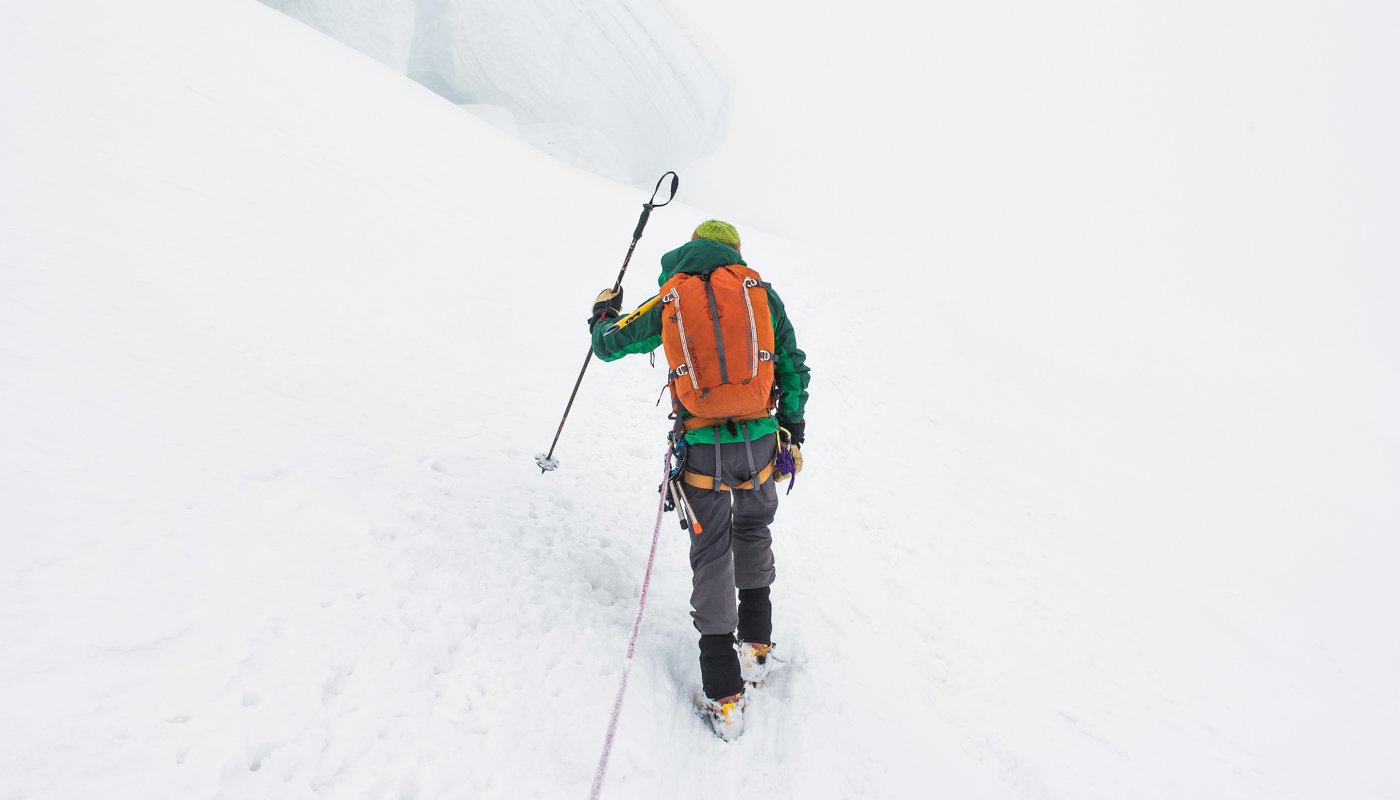
Here’s what to do about frostbite. Photo by asoggetti/Unsplash.
The hardest thing about frostbite is that, when you have it, you can’t feel it. Your toes or fingers or the tip of your nose go numb, making it easy for it to go undetected and get worse. Full-fledged frostbite is caused by extremely cold temperatures and sustained exposure to the elements. You’re not likely going to suffer from frostbite after a quick stroll outside. But if you’re climbing a big peak, skiing all day, or helping with a prolonged rescue in the backcountry, you might be susceptible. For tips on how to spot, treat, and prevent frostbite, we called up Dr. Peter Hackett, director of the Institute for Altitude Medicine in Telluride, Colorado, who spent over a decade running the medical and rescue camp on Denali, the highest peak in North America.
The Signs
Frostbite most often affects extremities—commonly your hands and feet and, to a lesser degree, your ears, nose, and cheeks. Numbness isn’t the only indicator. Skin can turn waxy or hard and have a white or gray hue to it.
“Tingling and numbness occur first,” Hackett says. “How long do you let your feet be numb before you have to worry about frostbite? Nobody knows the exact answer to that question. Rarely do you climb a peak without your toes getting numb. But I think it’d be dangerous to let toes stay numb for more than an hour, and fingers not more than a few minutes.” Toe function isn’t as important for your survival as having full use of your fingers.
If your skin is turning pale and has a waxy feel, that’s a sign that you lack circulation there. “If the tissue is actually frozen, ice crystals will turn the skin very hard,” Hackett says. If your skin freezes, it can blister or turn red or purple after thawing.
If you’re skiing in Vermont on a cold day and you spot whiteness on the tip of your nose, that’s likely frostnip, which is ice on the surface of the skin, a less serious predecessor to frostbite that can advance if not addressed. Go inside and warm up or cover up before it progresses further.
Prevention
When it comes to frostbite, prevention is better than treatment. Limit your exposure to extreme cold. This isn’t always possible if you’re out climbing or skiing for a long period of time, so cover up and dress in warm, properly fitting layers.
Wear a face mask pulled up to your goggles. Skida makes a wide variety of neck gaiters, including the warm but breathable Tour ($22), or opt for a more full-coverage option, like the Helmetclava ($40) from Outdoor Research.
Use hand and toe warmers. L.L.Bean’s Wicked Good Handwarmers ($30 for 25 pairs) are made from all-natural materials, or try one of these reusable ones, like Fourheart’s rechargeable model ($20). Keep your hands warm by sticking them in your armpits or windmilling your arms when you’re not moving.
Make sure none of your extremities are bound too snugly. “Be careful not to wear tight or constricted clothing that could cut off circulation. It’s better to have big boots with room to wiggle your toes,” Hackett says. “The worst thing you can do is put on extra socks that will constrict movement or blood flow.”
Remember to stay hydrated, too. “When you get dehydrated, you get more constriction of blood flow in your fingers and toes,” Hackett says.
And stay dry. If your feet perspire a lot, use a powder to keep them from sweating. “If you have wet socks, heat will be lost from your toes 25 times faster than if you have dry socks,” Hackett says. “Same with your hands if you have wet gloves.” Hackett suggests wearing a glove liner inside a mitten and never touching anything with your bare hands. Black Diamond’s Guide Finger Glove ($170) is a good option, with mitten-like warmth, ample insulation, and removable liners.
How to Treat It
So, you have frostbite. How bad is it? If it’s mild and superficial—only reaching the roots of your finger- or toenails—you don’t necessarily need medical attention. Hackett suggests taking ibuprofen, which reduces damage from inflammation and helps promote healing of the tissue, and drinking plenty of water to stay hydrated.
In mild cases, rewarming your hands or feet can be done at home—but carefully. You don’t want to aggressively rub frostbitten fingers or stick them next to a hot fire. The lack of feeling in the area can cause you to burn or damage tissues without knowing it. You can warm frozen digits slowly against your body inside a sleeping bag. “If you’re out in the field, it’s OK to put your hands in a pot of warm water, about the same temperature as a hot tub [100 to 104 degrees]. Thaw your hands, and make sure you’ve got blood flow out to the tips of your fingers,” Hackett says. Once your appendage has feeling and natural color, then you’ll know you’ve regained circulation.
If it’s extensive, deep frostbite—up to the knuckles or palms, for example—you’ll need urgent treatment at a medical center. The most severe stages of frostbite come with a risk of amputation.
Megan Michelson is a freelance writer based in Tahoe City, California.